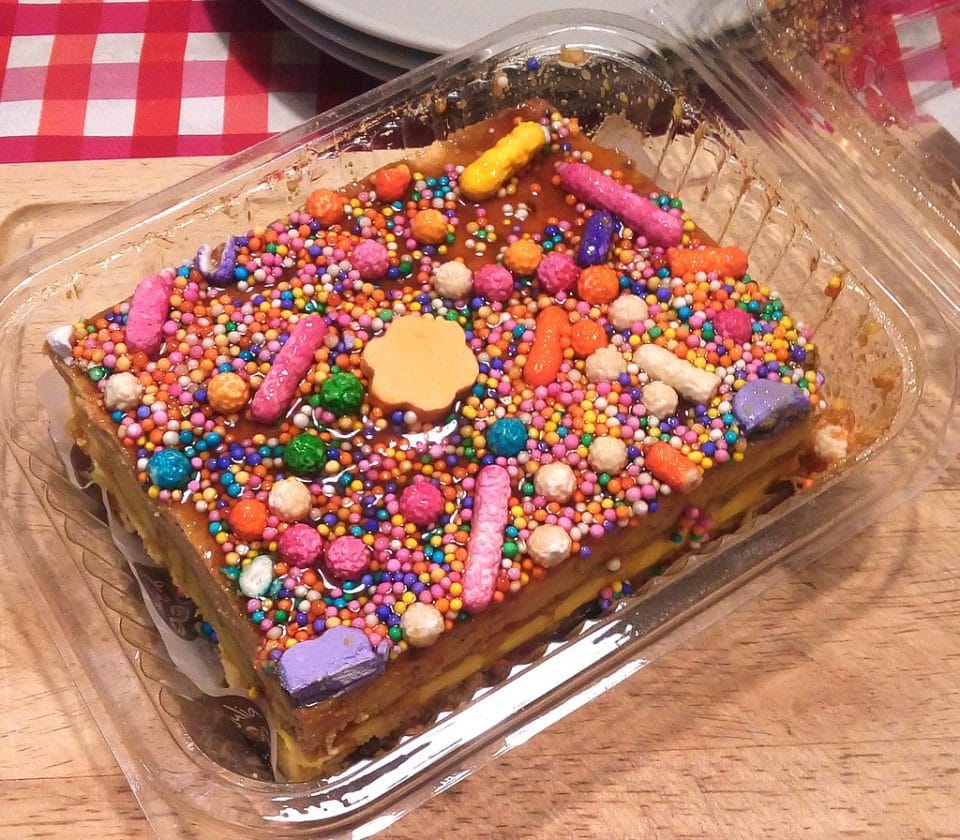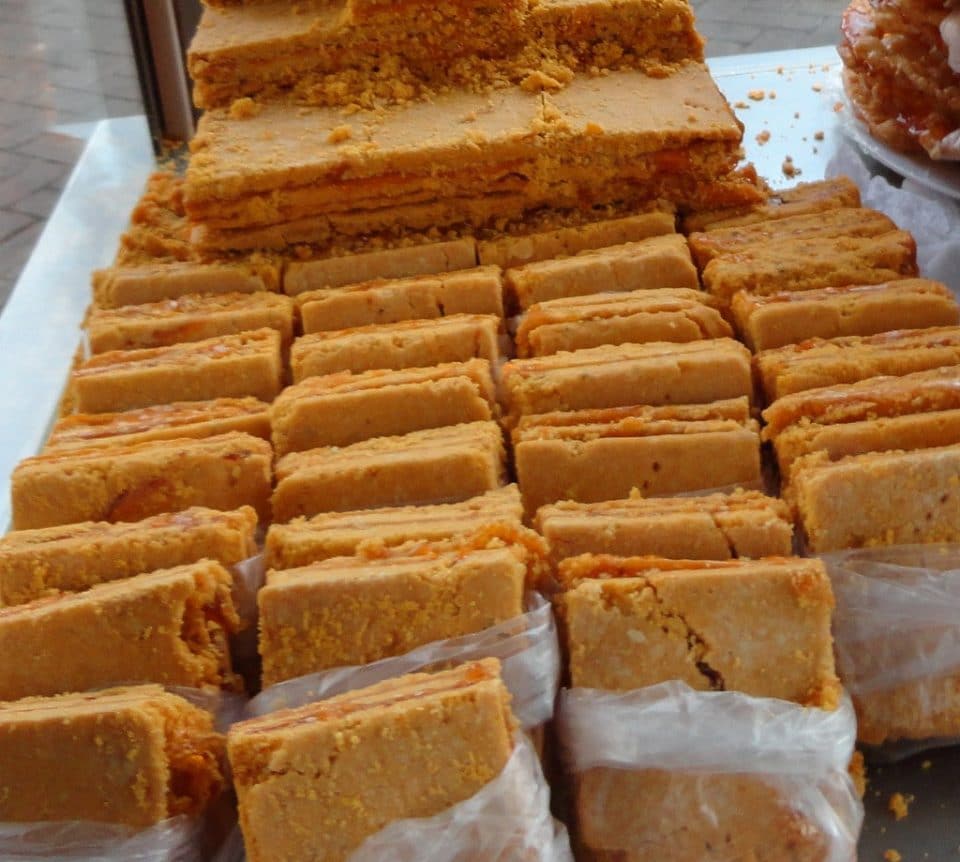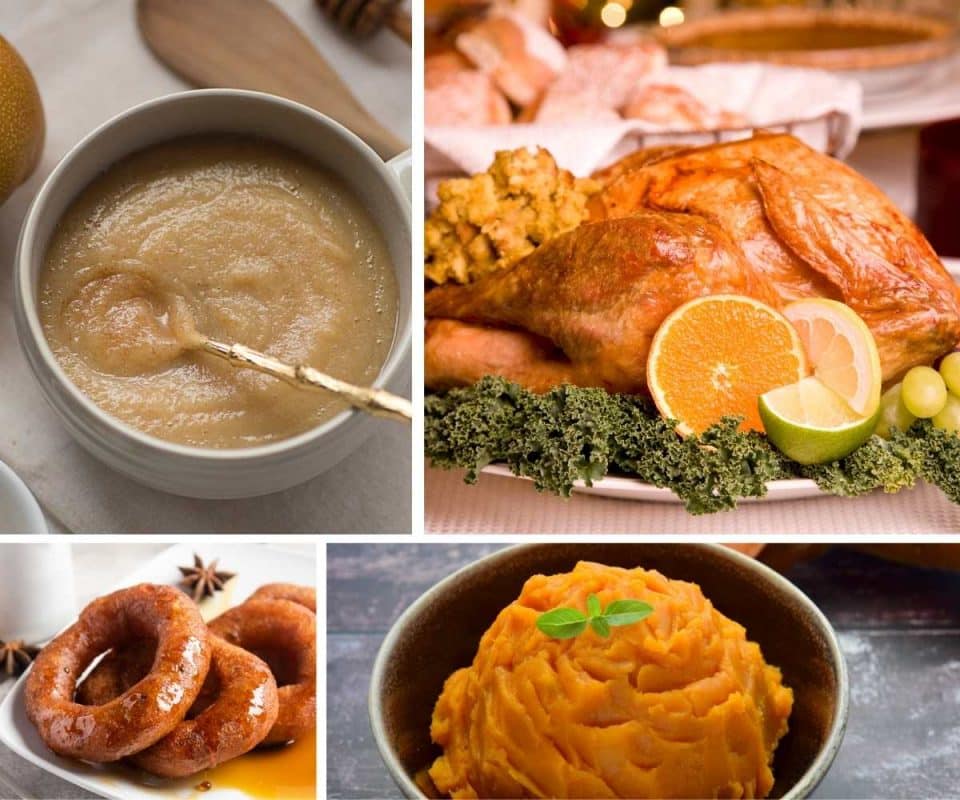Top 15 Most Popular Desserts in Peru

Peru is famous for having one of the most diverse gastronomic cultures in the world.
In today’s post, we explore the sweetest side of this country. I walk you through the top 15 most popular desserts in Peru. If you feel like flaunting your chef skills on a special occasion, each dessert is linked to a detailed step-by-step video.
1. Suspiro a la Limeña

Limeña Whisper is a dessert representative of the capital city of Peru, Lima. It represents criollismo: the mixture and, eventually, fusion of the Spanish and Peruvian culture. Its texture is very special: the base is a consistent yet smooth artisanal manjar blanco, while the top is a meringue that feels like a fluffy cloud that melts in the mouth.
The creation of this dessert has been attributed to Amparo Ayarza, whose husband, the poet José Gálvez Barrenechea, baptized her creation Suspiro a la Limeña because it was “soft and sweet like a woman’s whisper”. Unfortunately, it can be way more cloying than a whisper, which is why it’s typically served in a small cup or glass.
2. Mazamorra Morada

Mazamorra is as versatile as rice and pasta. There are many variations, all of them delicious and unique. Due to its viscous consistency, this dessert has to be served hot to preserve the original flavor and texture.
The most well-known mazamorra is Mazamorra Morada. Its origin dates back to pre-hispanic times, when it was prepared simply with purple corn. After the Conquest, sugar, dried fruits, nuts, and other ingredients, were added, resulting in the version we can taste today. You don’t have to go to an exclusive pastry shop or restaurant to try this popular dessert. Street carts at any main square sell it for an affordable price.
3. Mazamorra de Cochino

The name of this one comes from one of the main ingredients of this historic dessert: lard. Don’t be too quick to judge, though, as if you don’t try it, you will miss out on one of the greatest flavors you could ever possibly taste. The amalgam between chancaca, anise, yellow corn flour, and other special ingredients, is mesmerizing for the palate.
4. Arroz con Leche

This dessert can be found in countries other than Peru, but it’s one delicacy you can find on any traditional food cart. Manuel Atanasio Fuentes, a Peruvian poet, writer, and historian, claims that Arroz con Leche was a popular dessert back in 1860, when female sellers would walk around the street hawking “¡Y la arrosee! … ¡ Arróo con lech!” (which is a fragment from Fuente’s book, La Ciudad de los Reyes y la Guía del Viajero en Lima).
A tip for preparing Arroz con Leche is to use broken rice. Although this type of rice is considered of lower quality, it absorbs milk quicker and becomes more tender than others.
5. Picarones

When the recipe for picarones was included in a Chilean book as one of their national desserts, it raised somewhat of a conspiracy. But whether from Peru or Chile, they are still one of the most common desserts you’ll find on any Peruvian street.
Essentially, it’s dough fried in the shape of an irregular donut, crowned with a generous amount of honey. The homemade dough is very elaborate, incorporating wheat flour, yeast, macre squash, and yellow sweet potato. The honey can come from bees, chancaca, or fruit such as figs.
6. Queso Helado

The literal translation is Frozen Cheese. The origin of the name comes from the shape of the dessert, as it resembles slices of cheese piled up together. Its traditional preparation requires knowledge, effort, and patience since all the ingredients, which are primarily boiled fresh milk, condensed milk, chuño powder, and cinnamon, have to be mixed constantly.
7. Tocino del Cielo

Another dessert from Arequipa city with a tricky name. Tocino del Cielo is translated as Heaven’s Bacon, though no bacon is used in its preparation. The Heaven does have something to do with its creation though. It originated in Spain, created by the nuns of the Espíritu Santo convent in Jerez de la Frontera. In Arequipa, it was mainly cooked in churches by nuns.
It’s texture is similar to that of a flan. The original recipe was austere, since it only used egg yolks, water, and sugar. Nowadays, Peruvians enrich the recipe by adding condensed milk, vanilla essence, and shredded coconut. It’s very rare to find this sweet treat anywhere other than in Arequipa or Arequipeño restaurants.
8. Turrón de Doña Pepa

This is a special dessert because it’s associated with a religious event, one of the most reverent in Peruvian culture: The Procession of the Lord of Miracles, which has taken place every October since 1688.
According with the history, Josefa Marmanillo is the author of this flawless dessert. She was an Afroperuvian slave who was liberated due to illness and, since she was unable to work anymore, she went to The Procession to be cured. One version of the story claims she created the dessert, offered it to Christ and got cured. Another one says she was cured first and then, in appreciation for the miracle, she created the Turrón de Doña Pepa.
Its particular flavor differs from the Spanish turrón. The Peruvian Turrón is based on slices of baked, sugarless dough. The slices are then stacked with a special mixture of honey daubed between each one. When the top of the last slice is covered with honey, lots of colorful candies are sprinkled all over it.
One tip: be measured when eating this delightful dessert. It’s very rich in calories.
10. Humitas Dulces

Humitas are a native dish of the communities located in the Andes. They can be salty or sweet. Sweet humitas are accompanied by manjar blanco and raisins, and they come in different sizes and colors (shades of yellow). They are a maize paste with light flavors, wrapped in corn leaves and boiled until they have a tender and unified consistency.
10. Cachangas con Miel

Peruvian Cachangas were part of a traditional act of gallantry. Believe it or not, it’s said that during colonial times in Peru, Spanish gentlemen used to give cachangas as gifts to ladies they were pursuing, just as chocolates would be used for the same purpose today.
This dessert is more popular in the north of Peru, although it can be found in certain parts of Lima, such as Lima center and Miraflores. The shape of cachangas is rustic and large, and they have a crunchy texture. The fried dough is made of flour, eggs, sugar, yeast, and a pinch of salt. To make it sweet, honey is poured all over the cachanga.
11. Alfajores de Maizena

Alfajores are part of the Arabic inheritance that the Spanish brought with them to Peru. They are part of almost any pastry shop’s assortment of desserts. The particularity of this alfajor is that, since the two cookies are made of cornstarch, they melt in the mouth. The manjar blanco in the middle can be homemade or industrial. For the final touch, they are dusted with icing sugar.
12. Frejol Colado

This dessert is usually sold in fairs or stores specializing in typical sweets. It’s similar to manjar blanco, but the flavor is a tad stronger, the color is darker, and the texture is creamy and very slightly granulated. The origin of this dessert is associated with the Afroperuvian culture, which explains why it is more popular in Cañete and Chincha. The process of preparation is a lengthy one: after boiling the black beans, they need to be pressed through a tablecloth, which results in a soft paste.
13. Chumbeque

Chumbeque is a dessert representative of the city of Piura in the north of Peru, where you can find it in any store. It’s like a turrón since it is made of slices and honey, but it’s smaller, and the flavor of the honey is easier to perceive. It’s intense orange/yellow color comes from the many egg yolks included in the recipe.
14. Melcocha

An emblematic dessert of Peru that not many Peruvians themselves have tried. Melcocha is not a commercial sweet, so you won’t easily find it in stores, supermarkets, or pastry shops. It’s a sweet made in the street, just like when it was first created. Tacna is the city that produces the largest amount of Melcocha.
Its name comes from “mel-coctum”, which is “cooked honey”. With a name like that, you can expect a very sweet and smooth flavor. It’s sold in small rectangular bars, accompanied with a variety of nuts.
15. Ranfañote

If you ever have the chance to try Ranfañote, feel lucky! You would become one of the few people to have tried it. Since it’s cataloged as the oldest Limeño dessert, the recipe is not widely known. Some think Ranfañote was created from the resourcefulness of the Afroperuvian slaves, while others believe it was born during the boom in cane plantations.
Ranfañote is evidence of the creativity of Peruvian society. Who would think that such a strange combination of ingredients would taste so good together? Ranfañote incorporates stale pan frances (a simple and traditional type of bread that is sold in every Peruvian bakery), melted chancaca, anise, cinnamon and cloves, chopped fresh cheese, butter, pieces of coconut, almonds, pecans, and orange zest.
These are the 15 most popular desserts in Lima. Some are easier to find than others, but all of them are part of the national pride of Peru, a country that expresses its identity through its gastronomy.
If you’re into Peruvian foods, check out our list of the most popular foods and dishes in Peru.
Related: Popular Peruvian Christmas Foods
Related: 10 Exotic Peruvian Fruits to Try Out


